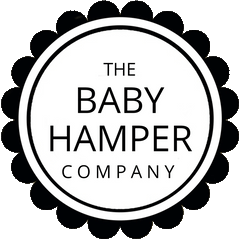Many babies will experience cradle cap when they are small. As a parent, it is nothing to worry about. Your baby will experience no pain or discomfort. Some people consider it unsightly, which is why they wish to treat it.
This essential guide will share all you need to know about cradle cap

Some Detail On Cradle Cap
Cradle cap is medically known as seborrheic dermatitis. Its name is given to the flaky yellow skin that can occur on a baby's scalp. Sometimes, you will see it make its way to the eyebrows, around the nose, ears, and nappy area.
Fortunately, cradle cap does not cause any pain or discomfort for your baby. Although it might look sore when the yellow flakes fly away and leave a red mark, it doesn’t hurt your baby. It shouldn’t usually itch either, meaning your baby can remain calm and happy.
You might wish to get rid of cradle cap due to its appearance and wish for your baby to appear well. This is normal, and there are many easy treatment options you can use for it.
Signs To Look Out For
Cradle cap is very easy to spot. With it being distinguishable, you can be sure to treat it the right way.
Some signs to look out for include:
- Yellow flaky patches on your baby’s scalp and body
- Red patches underneath yellow, flaky skin
- The yellow crust is often greasy
The skin issue will not cause your baby any distress, so don’t panic when you see it. The best thing you can do is remain calm and comfort your baby. You will find some treatment options later in this guide.
A warning for parents - do not try to pick or scratch the flakes, as this can cause them to fall early and cause discomfort. Imagine picking off a scab too early. We all know how painful that can be. Hence, allow the flakes to drop themselves.

Common Causes of Cradle Cap
There is currently no known cause of cradle cap. People say it could be due to hormonal changes. The oil glands in the baby’s skin could change over time. This could cause an oil imbalance, so the skin reacts.
Cradle cap is easily diagnosed due to the appearance of the skin. Yellow flakes are pretty easy to spot, and a doctor will soon tell you to use at-home treatment methods. Your baby’s cradle cap should soon disappear.
Most babies will experience cradle cap within their first few weeks. Or, they can get it up to the age of 12 months. Not every baby gets it. But it is pretty common.
Treatment Options For Cradle Cap
Luckily, there are plenty of treatment options available, so you can get rid of your baby’s cradle cap. In most cases, it will clear up on its own if you leave it. Yet, some parents might wish to treat it so it will disappear sooner.
- Only use baby shampoo to wash your baby’s hair. Your baby’s hair should only be washed with baby shampoo, especially when they have cradle cap. This is gentler on the skin and will prevent further irritation.
- Use a soft brush on their scalp. If you wish to use a brush for their hair, use a soft one. This will ensure that it does not irritate or move the flakes.
- Oil their scalp. You can use baby scalp oil to loosen any stubborn flakes and keep their skin happy.
- Use petroleum jelly. It can also be great to use petroleum jelly at night. If the flakes are stubborn, this will work to remove them. It can still take a few days for the flakes to loosen, but it will speed up the movement of flakes.
You can find further information and ideas for how to treat cradle cap in this information video.
When it’s Time to See a Doctor
We hope that your baby’s cradle cap does not require a doctor. However, it can happen in some cases.
Here are some signs that you need to see a doctor for your baby’s cradle cap:
- If the yellow flakes appear all over your baby’s body, you should see a doctor. They might require a prescribed treatment to get rid of the issue.
- Red or bleeding skin. A doctor must be consulted as soon as this happens.
- Swollen skin.
- No improvement in a few weeks.
They will be able to offer the right treatment to help the cradle cap disappear within a week or two. Your baby will be back to its best health in no time.





